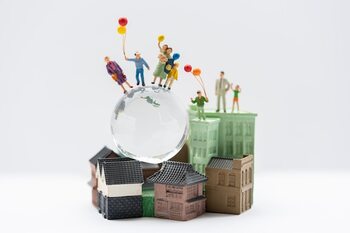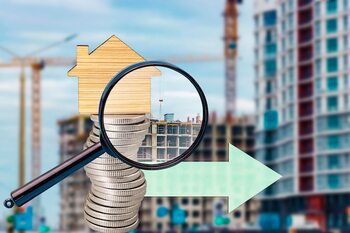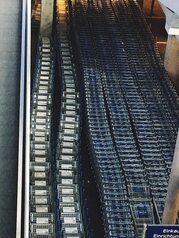The role of sustainability in real estate appreciation.

Sustainability has become a key factor that not only protects our planet but also drives real estate appreciation. In a market increasingly aware of the importance of the environment, properties that incorporate sustainable practices are gaining value and attracting committed buyers. This article will explore how sustainability influences property values, becoming a smart investment for those looking to maximize their wealth.
What is real estate appreciation and why is it important?
Real estate appreciation refers to the increase in the value of a property over time, resulting from various factors such as location, market demand, and the specific characteristics of the property. This increase in value is crucial for both owners and investors, as it represents an opportunity to achieve significant profits when selling or renting. In a context where sustainability is gaining ground, properties that implement eco-friendly practices not only stand out in the market but also tend to experience greater appreciation in their value.
The importance of real estate appreciation lies in its ability to reflect social and economic trends. As buyers become more aware of environmental issues and seek housing solutions that minimize their ecological footprint, sustainable properties emerge as preferred options. This growing demand can result in a notable increase in the appreciation of these properties, making them assets that are not only ethically desirable but also financially beneficial. Thus, understanding the concept of real estate appreciation is essential for those looking to maximize their investments within the realm of sustainable development.
2. The connection between sustainability and market demand.
The connection between sustainability and market demand is increasingly evident in the real estate sector. Today's buyers are taking a more conscious approach when evaluating their options, prioritizing not only the design and location of a property but also its environmental impact. Homes that incorporate eco-friendly features, such as renewable energy systems, recycled materials, and energy efficiency, not only reduce their occupants' carbon footprints but also offer long-term economic benefits. This shift in consumer mentality has led to an increase in demand for sustainable properties, which in turn raises their market value.
Moreover, governments and financial institutions are beginning to recognize the importance of sustainability in the real estate sector. Increasingly, tax incentives and preferential financing are being implemented for projects that meet ecological standards. This not only improves the economic viability of building or purchasing sustainable properties but also encourages greater investment in these types of assets. The combination of growing demand from buyers and institutional backing is creating a favorable environment for sustainable properties to increase in value, thus becoming an attractive option for both investors and owners committed to the well-being of the planet.
3. Renewable energy: a boost for your property value.
Renewable energies are a fundamental pillar in the pursuit of a more sustainable home, and their implementation can have a significant impact on property value. Solar energy systems, for example, not only reduce long-term electricity costs but also increase a home's appeal to potential buyers. In a market where more and more people prioritize energy efficiency and eco-friendly practices, having renewable energy sources translates into a competitive advantage that can considerably raise the property's selling price. Furthermore, these systems are often supported by government incentives that make their installation even more attractive.
Incorporating renewable energy not only improves the sustainability of the home but also contributes to a broader trend toward eco-friendly communities. Real estate developments that promote the use of clean resources tend to attract environmentally conscious residents, which can further strengthen the demand and value of the surrounding area. This synergy between sustainable properties and committed communities reinforces the positive perception of the place, making homes perceived as safer and more profitable investments. Thus, by adopting clean technologies and sustainable practices, homeowners not only contribute to the well-being of the planet but also secure a prosperous financial future for their real estate investments.
4. The influence of green spaces on real estate valuation.
The presence of green spaces in urban environments is a determining factor in real estate valuation. Properties near parks, gardens, and natural areas tend to be more attractive to buyers, who value these features not only for their aesthetics but also for the benefits they provide to quality of life. Vegetation acts as a sound buffer, improves air quality, and provides opportunities for recreational activities, which translates into higher demand and, consequently, an increase in property values. This trend reflects a shift in the priorities of modern consumers, who seek homes that offer not only comfort but also well-being.
In addition to improving quality of life, green spaces can also positively influence the energy performance of properties. The incorporation of vertical gardens and green roofs can reduce energy consumption by regulating indoor temperature during hot months. This sustainable approach attracts environmentally conscious buyers who are willing to pay more for homes that minimize their ecological footprint. Thus, urban design that integrates nature not only beautifies the urban landscape but also becomes a key driver for long-term real estate appreciation.
5. Eco certifications: a quality seal for your investment.
Ecological certifications are a crucial element that provides a quality seal to sustainable real estate investments. These certifications, which can include standards such as LEED, BREEAM, or the Green Seal, ensure that a property meets specific requirements in terms of energy efficiency, responsible resource use, and reduction of environmental impact. By acquiring a property with ecological certification, buyers are not only investing in a healthier and more efficient home, but they also benefit from greater long-term appreciation. Certified properties often have lower operating costs due to their efficient design, which is an additional attraction for potential tenants or future buyers.
In addition to cost reduction and increased value, eco-certifications also provide confidence to investors and owners. This formal backing validates claims about sustainability and environmental responsibility, allowing properties to stand out in a competitive market. As more consumers prioritize sustainability in their purchasing decisions, having these certifications can be crucial for capturing the attention of a broader audience. In summary, investing in properties with eco-labels is not only a decision aligned with environmental values but also a smart strategy to ensure significant returns in the future of the real estate market.
6. Global trends in sustainability and their local impact in Costa Rica.
Global trends in sustainability are redefining the way properties are developed and valued worldwide, and Costa Rica is no exception. With a solid reputation as a leader in environmental conservation and ecotourism, the country has adopted practices that prioritize sustainability in its real estate sector. Green certifications, such as LEED (Leadership in Energy and Environmental Design), are gaining ground among local developers, which means that properties built with environmentally friendly approaches not only meet high standards of quality but also become more attractive to an increasingly demanding market.
The local impact of these trends is reflected in a significant increase in the value of sustainable properties. Buyers are willing to pay more for homes that offer energy efficiency, responsible water use, and recycled materials. Furthermore, communities that integrate green areas and sustainable public spaces tend to experience an increase in their quality of life, which also translates into greater interest from investors. Thus, by aligning with sustainable practices, homeowners not only contribute to the well-being of the planet but also ensure a solid and profitable long-term investment.
7. Strategies to increase added value through sustainable practices.
To increase the value of a property through sustainable practices, it is essential to implement solutions that not only reduce the ecological footprint but also improve the quality of life for its occupants. The installation of solar panels, for example, not only allows for significant savings on energy bills but also makes the property more attractive to potential buyers. Similarly, the use of recycled or certified materials in construction can contribute to a more sustainable and efficient building. This initial investment can result in a considerable increase in resale value by adding features desired by an increasingly environmentally conscious clientele.
Additionally, promoting green spaces around the property can have a positive impact on both the well-being of residents and the value of the property. Incorporating vertical gardens, green roofs, or common areas with vegetation not only enhances aesthetics and contributes to local biodiversity but also promotes a healthy and active lifestyle. These types of improvements do not go unnoticed by buyers interested in sustainable and well-designed properties; therefore, investing in these strategies is key to maximizing return on investment and ensuring significant appreciation in the long term.



